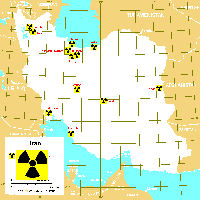How Hezbollah killed (Arab) Civilians
By James G. Zumwalt
October 26, 2006
http://www.washtimes.com/commentary/20061025-092622-2090r.htm
When the recent Israeli-Hezbollah war ended, the United Nations' newly organized human rights council, pressed by its Islamic members, spent its first two sessions criticizing Israel for allegedly causing heavy civilian casualties. But details are now known of a secret Hezbollah operation, mounted long before the war and focused, in violation of international law, on putting civilians at risk, that significantly contributed to this toll once the fighting began.
By way of background, in the early 1980s, Syria, which then controlled Lebanon, reluctantly allowed a group of 500 Iranian Revolutionary Guards into the Lebanese city of Baalbek, providing the seed from which Hezbollah sprang forth. Funded by Tehran, this terrorist organization began currying favor with the local population, providing many social services. Thus, when the popular Hezbollah secretly embarked upon activities with a more sinister purpose -- putting a Lebanese citizenry at risk it purportedly sought to protect in order to gain tactical advantage against Israel in any future conflict -- the local population blindly accepted this activity without knowledge of what it involved.
The activity upon which Hezbollah had embarked was conversion of private homes into mini-military sites from where it could easily target Israel's civilian population. Cloaking itself as the protective shepherd, Hezbollah effectively prepared an unwitting Lebanese civilian flock as sacrificial lambs to be slaughtered in furtherance of its own war-fighting capabilities.
Long before hostilities erupted on July 12, Hezbollah construction teams had gone out and modified numerous Lebanese homes. Sometimes with, but most the time without, the homeowner's permission, workers began adding on a large, single-function room. These rooms were unique for, when completed, they lacked an essential element of all rooms -- a door. Each room was sealed shut -- but only, and immediately, after an object was placed inside.
Often homeowners and neighbors did not know what exactly was entombed within the room as the object's insertion and the subsequent sealing of the room normally took place at night -- with the object always kept under wraps.
The residences Hezbollah selected for these unsolicited "home improvements" were chosen for their proximity to the Israeli border. When the fighting started after Tel Aviv responded militarily to Hezbollah's July cross-border raid, resulting in the deaths of three Israeli soldiers and the capture of two more, the purpose of the covert home improvements became evident to the owners -- though many were destroyed by Israeli air strikes before they could be activated.
When war erupted in southern Lebanon, designated leaders of Hezbollah combat teams received envelopes, each containing an address of one of the modified homes. The team quickly deployed to its assigned location, immediately breaking through an exterior wall of the sealed room. Each envelope contained aiming and firing instructions for the object prepositioned inside the room before it was sealed -- a surface-to-surface missile atop a launcher. After removing part of the room's roof to allow for unobstructed flight and on command, the team was to fire the missile, raining death and destruction down upon Israel's civilian population.
There was one major flaw in Hezbollah's home-conversion-to-missile-launch-site plan: Their construction activities had not gone unnoticed by Israeli intelligence. Closely monitoring Hezbollah's activities, they knew in advance the locations of most sites. As each room was completed, it had been added to Israel's target list so, once fighting started, it could quickly be destroyed -- its civilian hosts in many cases becoming collateral damage due to Hezbollah's illegal use of such a tactic.
Israel received much negative press for failing to accurately assess the Hezbollah threat. Clearly, some failures did occur, such as assessing how deeply Hezbollah had entrenched itself into southern Lebanon and Hezbollah's ability, undoubtedly with Iranian assistance, to monitor Israeli battlefield communications.
But Israel must be applauded for its success in identifying ahead of time the threat posed by Hezbollah's tactical use of private homes for military purposes -- a threat Israeli air power was then able to effectively negate. Israeli Ambassador to the United Nations Dan Gillerman alluded two days into the conflict to these illegal Hezbollah tactics, a reference apparently lost on the media that failed to investigate further.
Hezbollah had designed a tactical plan calculated to maximize civilian casualties on both sides of battlefield -- by design on the Israeli side in targeting its major population centers and by consequence on the Lebanese side as Israel responded. While this tactic was, from the Israeli perspective, checkmated by virtue of good intelligence, from the Lebanese perspective, many civilians at these launch sites were forced to pay the ultimate price. Sadly, from Hezbollah's perspective, these civilian casualties were but dispensable pawns in its chess match with Israel.
James G. Zumwalt, a Marine veteran of the Persian Gulf and Vietnam wars, is a contributor to The Washington Times.

































0 Comments:
Post a Comment
<< Home